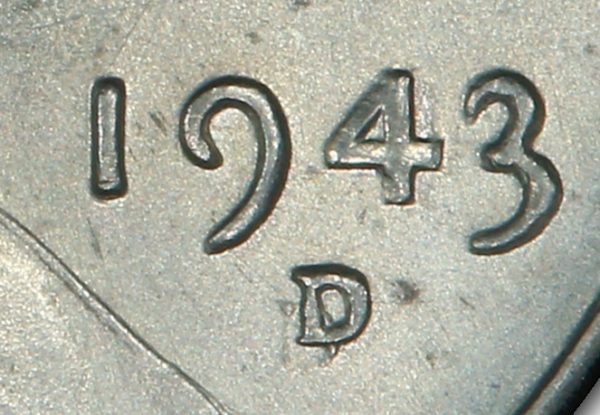
The 1943 penny holds a special place in U.S. numismatic history. Unlike most pennies made from copper, the 1943 penny was made of steel due to wartime needs during World War II. This unique production shift has piqued the interest of collectors and history buffs alike, raising questions about the 1943 penny value today. Whether you’re a seasoned collector or someone who found an old penny in a drawer, understanding the history, variations, and current market value of the 1943 Penny Value can help you determine if you’re holding onto a hidden treasure.
In this guide, we’ll dive deep into the background of the 1943 penny, explain the factors that affect its value, and provide tips on how to evaluate the worth of your steel wheat penny.
The History Behind the 1943 Penny
During World War II, the U.S. government faced a critical shortage of copper, which was needed for war-related manufacturing, such as producing ammunition and shell casings. To conserve copper, the U.S. Mint decided to produce pennies out of steel coated with zinc in 1943. These steel pennies, often referred to as “steelies,” were only produced for a single year, making them a unique part of American coinage history.
The transition to steel pennies wasn’t without problems. The zinc coating was prone to corrosion, and many coins developed a dull, gray appearance over time. Furthermore, steel pennies were easily confused with dimes because of their similar size and color. In 1944, the U.S. Mint resumed copper penny production, making the 1943 steel penny a one-year-only issue.
Why Is the 1943 Penny So Popular?
The 1943 penny is popular among collectors for a few reasons:
- Unique Metal Composition: The switch to steel makes these pennies stand out. Most U.S. pennies are made of copper or a copper alloy, so the steel composition is a notable deviation.
- Historical Context: Produced during a time of global conflict, the 1943 Penny Value is a tangible reminder of World War II and the sacrifices made on the home front.
- Scarcity of Copper 1943 Pennies: While most 1943 pennies were made of steel, a few copper pennies were mistakenly struck. These copper 1943 pennies are incredibly rare and highly valuable.
Types of 1943 Pennies
When assessing the 1943 penny value, it’s essential to know which type you have. There are two major categories of 1943 pennies:
1. 1943 Steel Penny
As mentioned earlier, most 1943 pennies were made from steel coated with zinc. These steel pennies are relatively common, as millions were produced at the Philadelphia, Denver, and San Francisco mints.
- Philadelphia Mint (no mint mark): The majority of 1943 pennies were produced here, with over 684 million coins minted.
- Denver Mint (D mint mark): The Denver Mint produced over 217 million steel pennies in 1943.
- San Francisco Mint (S mint mark): The San Francisco Mint produced about 191 million steel pennies.
2. 1943 Copper Penny
The copper 1943 Penny Value is one of the rarest coins in U.S. history. Only a few were accidentally struck when copper planchets (blanks used for penny production) were left in the machines from 1942. These pennies are so rare that they can fetch hundreds of thousands of dollars at auction.
1943 Penny Value Guide
The value of a 1943 penny varies significantly based on several factors, including the condition of the coin, the mint mark, and whether the coin is made of steel or copper.
1. 1943 Steel Penny Value
Steel pennies are relatively common, but their value depends on their condition and mint mark.
- Circulated Condition: Most 1943 steel pennies found in circulation are worth between $0.10 and $0.50. These coins have been used in everyday transactions, and their zinc coating may show signs of wear or corrosion.
- Uncirculated Condition: If you have an uncirculated 1943 steel penny that has been well-preserved, it can be worth between $2 and $5. The better the condition, the higher the value.
- Mint Mark Impact: Pennies from the Denver and San Francisco mints (marked with a “D” or “S” on the coin) tend to be slightly more valuable than those from the Philadelphia Mint. Steel pennies with a D or S mint mark in uncirculated condition can fetch up to $10 or more.
2. 1943 Copper Penny Value
The copper 1943 penny is the holy grail of coin collectors. Only around 20 to 30 of these coins are known to exist, and they have fetched astronomical prices at auction.
- In 2019, a copper 1943 Penny Value was sold for $204,000 at auction. Another example sold for $1.7 million in a private sale.
If you think you have a 1943 copper penny, it’s crucial to have it authenticated by a professional coin grading service. Counterfeit 1943 copper pennies are common, and many steel pennies have been plated with copper to deceive unsuspecting buyers.
Factors That Affect 1943 Penny Value
Several factors can influence the value of your 1943 penny, including:
- Condition: Coins that are in better condition (uncirculated or with minimal wear) are more valuable. Numismatists use a grading scale from Poor (P) to Mint State (MS) to assess the condition of a coin. An MS-65 steel penny, for example, will be worth much more than a circulated example.
- Mint Mark: As mentioned earlier, pennies with a D or S mint mark are generally worth more than those with no mint mark. Coins from the San Francisco Mint tend to be the most valuable.
- Rarity: Copper 1943 pennies are extremely rare, which significantly boosts their value. The scarcity of a coin plays a massive role in determining its worth.
- Authentication: Especially in the case of copper 1943 pennies, professional authentication is essential. Authentic coins carry more value than ones of dubious origin.
How to Determine If You Have a Rare 1943 Copper Penny
If you think you have a copper 1943 penny, there are a few tests you can perform to confirm its composition:
- Magnet Test: Steel pennies are magnetic due to their iron content, while copper pennies are not. If your 1943 penny sticks to a magnet, it’s made of steel. If it doesn’t, you may have a copper penny.
- Weight Test: A 1943 steel penny weighs about 2.7 grams, while a copper penny weighs 3.11 grams. You can use a precise digital scale to weigh your penny.
- Professional Grading: If your penny passes the magnet and weight tests, it’s time to have it authenticated by a professional coin grading service like the PCGS (Professional Coin Grading Service) or NGC (Numismatic Guaranty Corporation).
Conclusion: Is Your 1943 Penny Valuable?
The 1943 penny value can range from just a few cents for a common steel penny to over a million dollars for a rare copper version. Most 1943 pennies in circulation are steel pennies, which are relatively affordable for collectors, but copper pennies remain one of the most sought-after coins in U.S. history.
If you have a 1943 penny and want to know its worth, consider the coin’s condition, mint mark, and composition. Steel pennies are common, but uncirculated examples or those with a mint mark can command higher prices. On the other hand, if you believe you have a copper penny, it’s crucial to have it authenticated by a professional to confirm its rarity and maximize its value.
Happy collecting, and may your 1943 penny turn out to be a valuable addition to your collection!







